|
A number of studies have demonstrated the high levels of discards.
These high levels of discards have a significant impact on cetacean
populations. Evidence suggests that an increasing number of
cetaceans are malnourished due to depleted fish stocks.
April - June 2001: when 43 cetaceans were post-mortemed in the
UK, 10% were found to have died of starvation.
There are measures, which can be taken to reduce the levels of fish
discards. Regulation concerning minimum mesh size in the
codend is the most commonly used methods to limit the capture
of non-target fishspecies. In recent years, square mesh codends
and selection devices, grids, have been introduced.
Non-target species are normally reduced by the use of selective devices, but selection grids have been shown to damage a proportion of the target species and the non-target fish species.
Evidence from New Zealand suggests that these grids can and do harm marine mammals.
(Department of Conservation CSL 2000/2001 Contract: Autopsy of New Zealand sea lions incidentally caught in commercial fisheries: preliminary results of cover-net trials. Progress Report 16 July 2001)
Bottom otter trawls interact physically with the bottom sediment,
which results in removal or damage of sedentary living organisms,
such as coral.
On flat sandy/muddy bottoms, the disruption of the
sediment causes pollutants to be re-introduced as an emulsion,
resulting in further absorption into the food web.
http://www.europarl.eu.int/stoa/publi/default_en.htm
Scientific evidence indicates that significantly
high levels of toxins have been found in the bodies
of stranded cetaceans, and in cetacean populations
in the wild.
http://www.iwcoffice.org/Publications/PollIntro.htm
http://www.abdn.ac.uk/~nhi519/lighthouse/dolphins/lesionchge.shtml
Bottom pair trawling
Bottom pair trawls are similar to single bottom otter trawls, but do not have the same impact on the seabed.
Bottom pair trawling utilizes the combined towing pull of two vessels, each towing a trawl warp attached to the bridles in front of the two trawl wings.
As otter boards are not required, trawls are used which are at least twice the size of those which can be towed by a single vessel.
The setting and hauling operations are carried out by one vessel, whilst the other is used only during the towing sequence.
Shooting the net
Towing the net
Hauling the net.
|
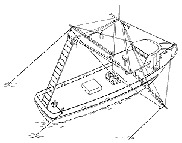
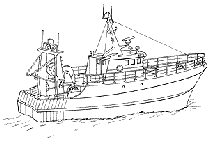
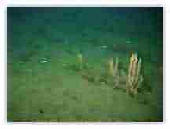
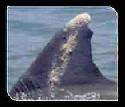
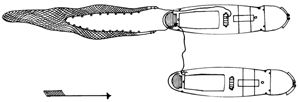
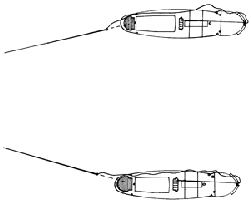


.gif)